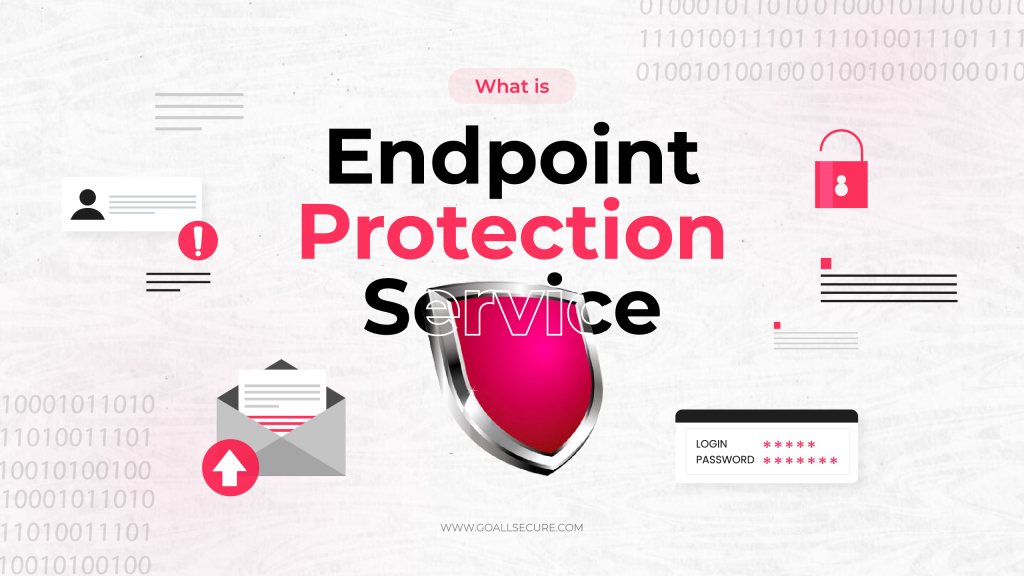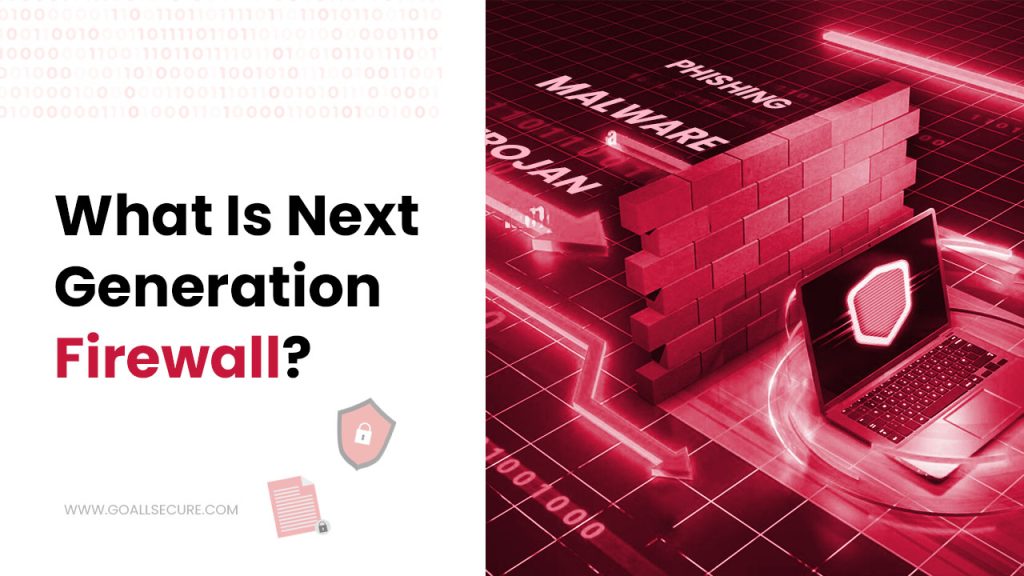The current threat landscape comprises complex, well-planned, automated cyber attack campaigns. These attacks use cutting-edge strategies and tactics to target several attack routes and penetrate the most secure of corporate environments. Several layers of defences are needed to fend off such powerful cyber attacks. A next-generation firewall is a solid first line of defence against these threats because of its variety of integrated network security measures. It scans through network traffic to recognise and stop these kinds of attacks. NGFW makes it easy to reduce the possible harm to the organisation by blocking these attacks at the network perimeter. This blog will discuss next-generation firewalls in detail, as well as their distinctive features, benefits, and much more.
Introduction to Next-Generation Firewalls (NGFW)
An NGFW, known as a next-generation firewall, analyses network traffic and implements rules to prevent potentially harmful traffic. NGFWs improve and extend the features of conventional firewalls. They perform all the functions of firewalls but with greater strength and more features. They are a network security tool that goes beyond a conventional, stateful firewall called a next-generation firewall (NGFW). A next-generation firewall has extra features, including application awareness and control, integrated intrusion prevention, and cloud-delivered threat intelligence, whereas a classic firewall usually offers stateful inspection of incoming and outgoing network traffic. Let’s clear it with an example.
Think about two concert security companies. In order to ensure that participants are arriving at concert locations genuinely, one must confirm that they are not on any felony lists and that their identities match those on their tickets. The second one examines the participants thoroughly (along with their goods) to ensure they are not carrying any prohibited or dangerous objects, and it also checks felony lists and other similar things. Concert security is maintained by the first agency against overt threats, while the second agency also detects potential risks. A typical firewall functions similarly to the initial security agency in that it restricts or permits traffic (concertgoers) according to its source, destination, and validity of network connection. An NGFW functions more like a second security agency by conducting deeper data inspections to find and stop threats that might be concealed in seemingly innocent traffic.
Next-generation Firewall vs. Traditional Firewall
In the past, when the IT environment was less dynamic, and programmes could be recognised by port, this static approach worked well. However, given the growing intricacy of virtualised networks and the sophistication of security threats, this is no longer sufficient. Keeping that in mind, a new development was introduced for the original firewalls. The next excellent security tool, as they called it, was the Next Generation Firewall (NGFW). It was described as a “deep-packet inspection firewall” by security experts because it looked beyond port/protocol inspection and blocking by adding application-layer inspection, intrusion prevention, and intelligence from outside the firewall. With more granular capabilities that enable restrictions based on identity, location, application, and content, it boasted all the advantages of a conventional firewall. The major drawback of traditional firewalls is that they use stateful inspection, decide according to predefined security policies, and allow or deny traffic depending on port and protocol.
Modern firewalls are more intelligent than conventional firewalls’ general techniques; they are significantly more successful at making fine-grained distinctions. Traditional firewalls safeguard a company’s networks at the data connection and transport layers (layers 2 and 4 of the OSI model) by port/protocol inspection and blocking. However, NGFWs can filter packets depending on the application (layer 7 of the OSI model) and even behaviour. In order to recognise dangers, they also consult outside data. They are able to recognise and repel many more skilled assailants than in the past because of this dynamic, adaptable strategy. Because stateful firewalls were easily circumvented by sophisticated threats like ransomware, it increased demand for a more sophisticated and intelligent security solution. Next-generation firewalls were the answer to that problem.
Understanding the Advanced Features of NGFW
Next-Generation Firewalls, or NGFWs, are the result of evolving threats. As the name implies, a next-generation firewall has features that are not present in earlier generations, but it is nevertheless built on the same fundamental architecture as traditional firewalls. They have become one of the most essential components of any cyber security arrangement. Here is why:
Deep Packet Inspection (DPI)
NGFWs do deep packet inspection (DPI) instead of packet filtering, making them superior. Similar to packet filtering, DPI entails analysing each individual packet to determine the source and destination ports, IP addresses, and other details. DPI examines every packet’s body in addition to its header. Deep packet inspection, or DPI, examines network packet content to find application-level information and threats concealed in otherwise legitimate traffic. The ability to analyse the information included in packets makes them highly lucrative. Deep-packet inspection is very advanced compared to conventional firewall technology, which examines a packet’s IP header to ascertain its source and destination.
Application Awareness and Control
This is a crucial feature of next-generation firewalls. Application awareness, or the capacity to apply sophisticated rules and filter traffic depending on the application (instead of just port). Rather than being limited to port, protocol, and IP address enforcement, application awareness enables comprehensive policy enforcement and application management based on individual programmes, their content, traffic source and destination, and more. In addition to having more control over specific applications, they can prohibit traffic coming from particular ones. NGFWs filter or permit packets according to the application they are intended for. They accomplish this by examining traffic at the application layer or layer 7. Because traditional firewalls only examine traffic at levels 3 and 4, they are unable to perform this function. Administrators can prohibit potentially dangerous apps by using application awareness. An application cannot pose a threat to the network if its data cannot pass through the firewall.
Intrusion Prevention System (IPS)
Intrusion Prevention System (IPS), which keeps an eye out for harmful behaviour on the network and stops it in its tracks. Incoming traffic is analysed by intrusion prevention, which then blocks known and possible threats. IPS functionality examines traffic for questionable patterns and behaviours in order to identify and block recognised and unknown threats. This monitoring might be policy-based (stopping activity that goes against security policies), signature-based (matching activity to signatures of known threats), or anomaly-based (watching for unusual behaviour). IPSes are a component of NGFWs’ DPI capability.
SSL/TLS Inspection
Cryptographic technologies such as Secure Sockets Layer (SSL) and Transport Layer Security (TLS) control data encryption and transport between two locations. The process of intercepting and examining SLS/TLS-encrypted internet traffic between the client and the server is what we call SLS/TLS inspection. TLS/SSL inspection looks for hidden risks by decoding and examining TLS/SSL-encrypted traffic, which makes up the vast bulk of traffic nowadays. Since the great bulk of internet communication—including harmful content—is SSL encrypted, inspecting SSL traffic has become crucial. Regretfully, dangers can also conceal themselves in HTTPS transmission if sensitive data can. Because of this, efficient SSL inspection is equally important because it allows an organisation to thoroughly examine the contents of encrypted communication before barring it or re-encrypting it to allow it to proceed.
Advanced Threat Protection (ATP)
Information on possible attacks is known as threat intelligence. Since malware strains and attack methods constantly evolve, having the most recent threat intelligence is essential to thwart those attempts. NGFWs have the capacity to receive and respond to external threat intelligence feeds. Threat intelligence maintains the efficacy of IPS signature detection by supplying the most recent malware signatures. Information about IP reputation can also be obtained via threat intelligence. “IP reputation” indicates which IP addresses are frequently used as the source of attacks, particularly bot attacks. The most recent known malicious IP addresses are provided by an IP reputation threat intelligence feed, which an NGFW can subsequently ban.
User and Identity-based Policies
The identity awareness feature of next-generation firewalls allows for more precise control over apps by individual users, user groups, and their computers. All of the major authentication protocols, including LDAP/AD, RADIUS, Kerberos, and Local Auth, are supported by a next-generation firewall device. This aids in giving organisations control over the kinds of data that can enter and leave the network as well as the transmission and reception of data for a particular user. For the purposes of user-based policies and monitoring, user identification allows the NGFW to link specific users and their network activities rather than just the locations to which they connect.
Benefits of Next-Generation Firewalls
NGFWs offer far more robust and more reliable protection than conventional firewalls. The capabilities of traditional firewalls are restricted; while they can block traffic over a single port, they are unable to apply rules relevant to a particular application, guard against malware, or identify and stop unusual activity. Because of this, attackers are able to avoid detection by connecting through a port that is not conventional, something that a next-generation firewall would stop. Next-generation firewalls can defend against a wide range of sophisticated threats because of their context-awareness and capacity to receive updates from external threat intelligence networks. They can even employ intelligent automation to maintain security policy updates without the help of busy IT staff. NGFW provides simpler, less expensive and easy-to-update security infrastructure. Here is a list of benefits you are sure to receive with a next-generation firewall:
- They provide multi-layered protection
- You get ransomware, spam and through endpoint protection
- NGFW never makes you compromise on speed with an increase in the number of security enhancements
- Accuracy in threat detection, alert, and protection
- They offer role-based access, allowing you to control data access easily
- Managing NGFW is relatively hassle-free, and ease of use is commendable
- Excellent speed of threat detection
Selecting the Right NGFW Solution for Your Business
More than ever, internal networks are suffering from targeted and sophisticated security attacks. In order to defend networks from the most recent and sophisticated network attacks, next-generation firewalls offer capabilities that include intrusion prevention systems, website filtering, and inline deep packet inspection. A next-generation firewall ensures security in a complex and dynamic environment. When implementing an NGFW strategy, organisations should carefully consider which product best suits their needs in terms of security and functionality. Evaluating the providers beforehand helps find the best firewall for small businesses. You should engage a range of vendors and consultants in the same way you would with any other technology decision process. Here are some helpful suggestions to assist you and our business in choosing the best NGFW for your setting:
- Be realistic about your organisation’s needs. NGFWs offer many cool features, but you should choose based on which features matter to your organisation.
- Always make sure that you don’t pick the first product you see. Inspect all the vendors thoroughly and choose once you are fully satisfied. You also have the option of testing with third-party vendors.
- Another thing to ponder before getting into NGFW is your organisation’s budget and staff. Check in to see if you have enough funds to invest, and also make sure that once the implementation is done, you have trained staff to handle the daily tasks.
- While you are conducting tests for the NGFWs, make sure you try different placements as well. This way, you will definitely find the optimal position for deployment in your network framework.
- Lastly, choose an NGFW that is easy to manage and offers seamless usability. This will save you and your team a lot of time and hassle in the future.
NGFWs are the advanced technology in network security. They provide a plethora of features, skills, and instruments that safeguard your network from contemporary cyber threats and shut off all potential points of entry. However, there are many different types of next-generation firewalls, and selecting the best firewall for businesses can be challenging. Even if an NGFW is necessary to defend against contemporary threats, keep in mind that different NGFW models have distinct use cases. Check out our blog on best firewalls for small businesses to learn more about assessing NGFW solutions and what characteristics to look for in a firewall. You can trust GoAllSecure for all your firewall needs. Our experienced team of cyber security specialists will fit your budget and business needs. If you have more questions regarding next-generation firewalls, feel free to contact us at +91 85 2723 7851 or +44 20 3287 4253.

















 TRAVEL & HOSPITALITY
TRAVEL & HOSPITALITY HEALTHCARE
HEALTHCARE RETAILS & ECOMMERCE
RETAILS & ECOMMERCE BANKING & FINANCIAL
BANKING & FINANCIAL AutoMobile
AutoMobile MANUFACTURING
MANUFACTURING FOOD
FOOD EDUCATION
EDUCATION



